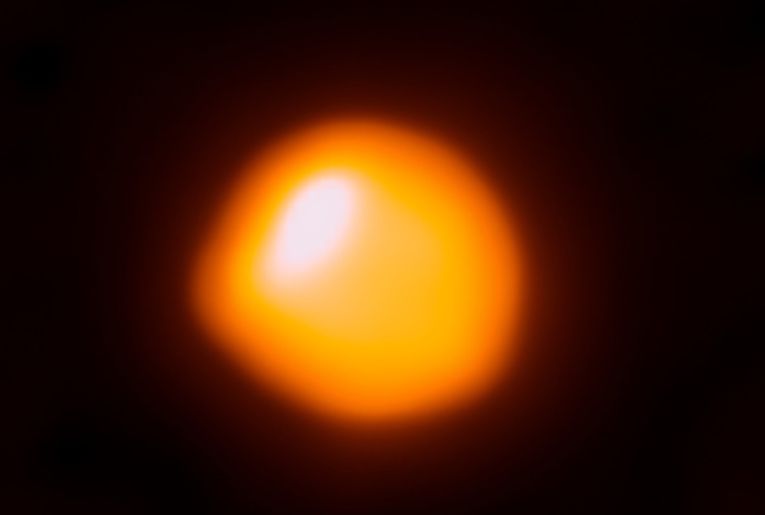Astronomers were able to refine a number of parameters of the supergiant star Betelgeuse: it turned out to be smaller and closer to the Sun than previously thought.
Scientists have concluded that the star is now in the early core helium-burning phase. Thus, a supernova explosion may not take place soon. The article was published in The Astrophysical Journal.
Betelgeuse (or Alpha Orion) belongs to the red supergiants and is considered one of the largest stars known today. Its age is eight million years, and it has already exhausted the reserves of hydrogen in its core. It is believed that the end of Betelgeuse’s life in the form of a type II supernova explosion due to the gravitational collapse of the core is already close, and during the explosion it will become comparable in brightness to the full moon.
Between November 2019 and March 2020, Betelgeuse experienced a record drop in brightness for the entire time of photoelectronic observations, which astronomers interpreted as the giant’s readiness to explode. However, in April 2020, the brightness of Betelgeuse returned to normal values, and the dimming was explained by the release of the plasma cloud, which was formed by expansion and cooling dust particles.
A group of astronomers led by Meridith Joyce of the Australian National University decided to understand the behavior of Betelgeuse as a representative of variable red giants. For this purpose, scientists used the MESA code (Modules for Experiments in Stellar Astrophysics), which allows building seismic and hydrodynamic models of stellar evolution, and data from photometric and radio observations of the star, obtained both by ground-based telescopes and observers, and by the Coriolis spacecraft.
As a result, scientists managed to obtain a more accurate value of the star’s radius – 764 times the radius of the sun. This made it possible to clarify the distance to Betelgeuse – 548 light-years. This result is well consistent with the data of the Hipparcos space telescope, but somewhat worse – with the data of radio observations. Simulations have shown that the long-term brightness fluctuations of the star with a period of about 416 days are the result of pulsations in the fundamental p-mode, which are driven by the kappa mechanism. Also, during the analysis of photometric data, it was possible to determine the pulsation period along the radius of the star at the frequency of the first overtone, which was 185 days. Thus, Betelgeuse has been classified as a double-mode pulsator.
Since the behavior of the oscillating shell of a star depends on its mass, the researchers were able to impose restrictions on the mass of Betelgeuse in the range of 16.5-19 solar masses. In addition, astronomers have concluded that the supergiant is now in the early helium-burning phase in its core, which means that it could live another hundred thousand years before going supernova.
